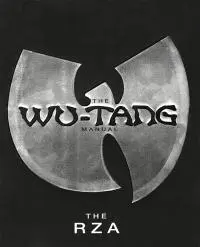Header image by Roy Christopher
Story structure helps us recognize a story as a story, but how are there so many stories? How do they stay interesting to us if all of them have the same basic structure? I feel like another task of a good story is to overload our perceptive buffer and sneak the rest of the goods in unnoticed. But how?
In a 2005 interview with Daniel Robert Epstein (R.I.P.), Pi director Darren Aronofsky likened writing to making a tapestry: “I’ll take different threads from different ideas and weave a carpet of cool ideas together.” In the same interview, he described the way those ideas hang together in his films, saying, “every story has its own film grammar, so you have to sort of figure out what the story is about and then figure out what each scene is about and then that tells you where to put the camera.”
Now, when watching a movie or reading a book, I often find myself trying to break down its constituent parts. Also, when writing or creating, I sometimes try to establish a loose taxonomy of the elements involved in the project, a list of the salient aspects of the story. These are orthogonal to the usual concerns about structure (e.g., the three acts, beat map, midpoint, climax, etc.), but they’re as important. Necessary but not sufficient.
Here are a few examples:
Jordan Peele’s Nope (2022) contains the following concepts:
- Animal wrangling
- Hollywood context
- Electronic surveillance
- Carnival sideshows
- Spectacle
- UFOs
 Richard Kelly’s Donnie Darko (2001), my favorite movie, contains the following:
Richard Kelly’s Donnie Darko (2001), my favorite movie, contains the following:
- High-school context
- Pookah legend
- Time-travel
- Literature
- Psychosis
- Superhero ideology
And Aronofsky’s own Pi (1998) contains these:
- Chaos theory
- Stock market
- Go
- Migraines
- Kabbalah
- Computer technology
There is a limit, a rule of the grammar, of the number of elements that the average story can carry. There’s a point, a threshold, at which too many elements cause one story (or one “page,” in the design scenario) to fall apart, a line across which something else (e.g., another page, a sequel, etc.) is needed. This limit is qualitative to be sure, but it’s not hard to tell when it’s been exceeded. There are exceptions, of course (think Paul Thomas Anderson’s sprawling Magnolia or Thomas Pynchon’s almost intractable Gravity’s Rainbow).
Though this might ultimately be an aesthetic idea, and this could be considered the outer limits of it, scientists such as Richard Feynman, Bucky Fuller, and Albert Einstein have often spoken of the “beauty” of the right solution to a problem. Fuller once said, “When I am working on a problem I never think about beauty. I only think about how to solve the problem. But when I have finished, if the solution is not beautiful, I know it is wrong.” And Einstein professed, “The ideals which have lighted me on my way and time after time given me new courage to face life cheerfully, have been Truth, Goodness, and Beauty.”
Calling the idea “beauty” is a bit oversimplified and not helpful, but one can see where a working theory can only contain a certain number of elements (i.e., constructs or concepts) before it becomes operationally unmanageable. And while building a theory and weaving a narrative are very different pursuits, one can see parallels in the number of elements each will afford. It’s less like the chronological restrictions we place on certain activities (e.g., you must be 18 to vote, 21 to drink, etc.) and more like having enough cream and sugar in your coffee. It’s a difference like the one between hair and fur.
I find RZA’s The Wu-Tang Manual a perfect case study of how to build a modern mythology. One cannot deny the mystique surrounding the Wu-Tang Clan, and this book spells out the elements involved in creating that mystique without rendering it obsolete. When creating my own taxonomies, I will often refer to The Wu-Tang Manual to get an idea of whether or not my project possesses the proper amount of simplicity, complexity, and balance. The RZA’s is not a flawless system, but it’s damn solid.
I started doing these lists just as a writing exercise, and one I haven’t seen in any of the writing books. Along with traditional structural concerns, these lists help keep the story on the skeleton.
Get Donnie Darko at Amazon
Get The Wu-Tang Manual at Bookshop or Amazon

About the author
Roy Christopher is an aging BMX and skateboarding zine kid. That’s where he learned to turn events and interviews into pages with staples. He has since written about music, media, and culture for everything from books and blogs to national magazines and academic journals. His books include Dead Precedents (Repeater, 2019), Boogie Down Predictions(Strange Attractor, 2022), and Escape Philosophy (punctum, 2022), among others. He holds a Ph.D. in Communication Studies from the University of Texas at Austin. As a child, he solved the Rubik’s Cube competitively.







